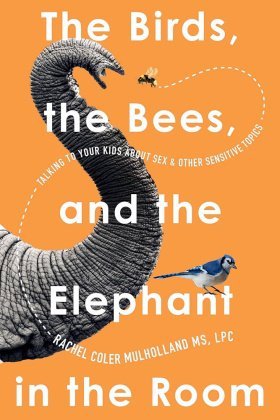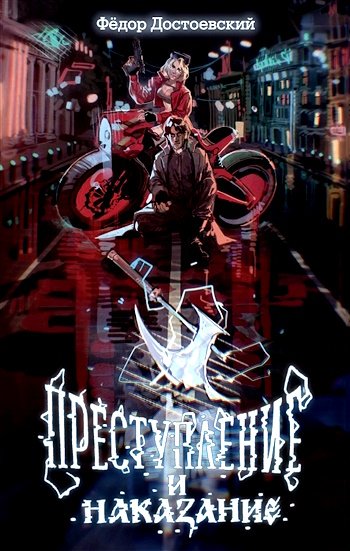That might be difficult to hear for folks who were raised thinking that touching their own bodies was a bad thing, and I recognize how hard this can be to talk about, especially when you’re talking about it with your own kids. It might be tempting to put it off, to say This is something I can talk to them about when they’re in puberty and they’re actually touching themselves. The thing is, kids start touching their bodies when they’re infants, and often do not stop. How many times have you had to shoo an exploratory hand out of a wet or poopy diaper? Probably more times than you want to reflect on. It’s likely that many of you reading this book have a child who uses their arms and legs to hug a stuffed animal especially tight as they’re falling asleep. No, the fact is that at some point, kids are going to touch their bodies. Providing guidance for our children as they venture into learning about their bodies is part of our jobs as parents. This guidance not only includes making sure their bodies are safe, but making sure their hearts and minds are safe, too.
Figuring out those rules and how to help our children protect their brains requires a healthy dose of education and self-reflection. For many folks, the first step is having to recognize that self-stimulation and body exploration aren’t necessarily sexual in the way they’ve been taught to understand it. There are several proposed reasons why early- and middle childhood-age children self-stimulate. The first is that it is used as a regulatory mechanism—they may rub up against their stuffed animals, touch themselves through blankets, or gravitate toward stuffed toys that vibrate and soothe. Even though that stimulation is technically occurring on their sexual organs, it’s not for the type of sexual pleasure that older people seek. Instead, they are using it as a tool to help regulate their central nervous system, calm themselves down, and feel good. Even if a child knows how to deep breathe, meditate, or use mindful movement, self-stimulation is sometimes the best tool for them in the moment, and that is okay.*
Part of helping our children grow up to have respect for their bodies and understand how to keep themselves safe is creating boundaries and rules around safe self-stimulation. Beginning as soon as self-stimulation is a noticed behavior, messaging must be consistent—there is nothing to be ashamed of when you’re curious about your body. “You are not wrong or bad, you are curious,” “Exploring your body is normal,” and “If you are being safe, it’s okay for you to touch your own body.”
Again, I acknowledge how hard it might be to say these things to your child, but keep in mind—a child who knows how their body works, who knows what feels good to their body, and who has been allowed to explore themselves is less likely to be exploring it with anyone else. If they’re touching their bodies, they are less likely to be convinced that anyone else should touch them before they are ready.
It’s important to know, though, that most coexploration between same-age peers is completely developmentally normal—children are just as curious about their friends’ bodies as they are their own. It is not a romantic or inherently sexual act—they are trying to build an understanding of the universality of the human experience. “I have these parts, and they look like yours, but not yours. Huh. Interesting.” HOWEVER, any power imbalance, coercion, threats, or manipulation to elicit compliance in coexploration, or any activity directed specifically toward sexual stimulation—such as mimicking sex acts—is not considered developmentally appropriate and should be immediately stopped, redirected, and examined.
It is always worth reminding our children of the boundaries around coexploration: “You should explore your own body right now—your brain isn’t ready to explore other people’s bodies.” This is true not because coexploration with same-age peers is damaging—many experts will tell you it isn’t. The reason I employ this phrase is because there are people outside our children’s age range who can and will exploit a child’s natural curiosity in order to harm them.
By teaching our children that their body is for them, no one else, not even their friends, we teach them that they can and should say no, and tell us if requests have been made. Because for most of us, that’s what we’re trying to prevent: our children becoming unsafe and being sexualized too early.

Sample Scripts
Self-Exploration
For me, the goals for the earliest conversations around self-exploration and stimulation are simple: let kids know that it’s okay that they’re curious and want to touch their bodies, and let them know that there are boundaries for when and how they are allowed to do that. As kids get older, it’s important to continue to remind them of the boundaries, but also let them know that self-exploration is a vital part of protecting themselves as they grow.
Early Language/Diaper Wearers (ages 0 to 3)
“You need to keep your hands out of your diapers, bud. There are germs in there from your poop and pee. Let’s go wash your hands.”
“No hands in pull-ups! They hold germs on your skin and those germs get on your hands.”
Try to remember that this sensory-seeking behavior is normal and isn’t something shameful—when you’re redirecting the behavior, keep in mind that the diaper is where the germs are, and that the child themselves is not dirty. Offering an alternative like “Let’s make sure you’re all clean before you touch your penis/vulva—wait until after bathtime!” can help shape their understanding in a way that does not damage their self-appraisal but also maintains health and safety.
Preschool/Just Potty-Trained Children (ages 3 to 5)
“Stop sign! If you want to put your hands in your pants, then you need to be in your bedroom or in the bathroom.”
“Hey, bud! No touching our swimsuit parts when our friends are over. Please take your hands out of your underwear, then go wash your hands.”
“I know that feels good, but you need to be in private if you are going to touch your swimsuit area.”
Elementary Children (ages 5+)
As children grow, their personal “neighborhood” starts to expand. No longer are they interacting solely with people whom we have vetted—they are beginning to venture into the broader worlds of school, activities, and friends. With this change comes the need for us to become more detailed in the boundaries our children are entitled to as autonomous bodies. This can be a difficult concept to frame for kids this age because previously, they only needed to rely on our judgment—we called the shots about who was safe to help. While we are still their primary safeguard, we can start to explain to children which other adults can intervene in situations where they may need help. Presenting this as levels of care can be a way to make it more understandable: health or safety help, and hygiene help.
“Isn’t school so exciting? It really is. I want you to know who your safe grown-ups are at school—who can help you if you have trouble in the bathroom or if you hurt your private parts. The school nurse can help you if you hurt something or if your body is uncomfortable, and they will make sure to call Dad and let me know what’s up. You can also let your teacher know if you have a problem in the bathroom, and he will know how to help.”
It is a good idea to check in with your child daily to ask how their day went—“Anything exciting happen today? Has anyone in your class ever had to go to the nurse before?”—and maintain open communication regarding their bodies and boundaries. This includes discussing how their own exploration should be carried out.
“Hey, kiddo, please remember the rules about touching your body—you need to be in your bedroom or in the bathroom, you should only be using your hands to touch your body, and your hands need to be washed before you touch.”
“I know you’re getting really curious about bodies, but please remember that the body you should be most curious about is your own. Your brain still has a lot of learning and growing to do! The best way for your brain to stay safe is to only explore your own body.”
Keep in mind that many, many children ignore this advice at least once and ask to see (and sometimes touch) the “parts” of their peers. If you have established open communication with your children, you need to be prepared for admissions of “playing doctor” or “I’ll show you mine if you show me yours.” Same- and similar-age children expressing curiosity over each other’s bodies is age-appropriate behavior and should be gently redirected back to self-exploration in private. How you react to your child’s admission of boundary pushing will heavily influence how they feel about being open with you in the future. It is not unreasonable to alter privileges and supervision for a child who is demonstrating difficulty making sound decisions.
“Hey, bud. I noticed when Dayvon was over that you were both in the bathroom at the same time. Remember, only one person in the bathroom at a time—privacy!”
“When your friends were over last time, you chose to play doctor with no clothes on. We keep clothes on for playdates. This week when your friends are here, you will play in the living room instead of in your bedroom.”
In these scenarios, you have reminded them that structure and supervision are required for their safety, and that these are not punitive measures—they are chances to practice making good decisions. You have also reinforced that you are not going to react in a way that makes you scary to approach in the future—you are someone who will help your child make choices that keep them safe. It is important, though, to keep in mind the boundaries of curiosity and exploration. Repeated instances of exploration even after redirection and/or expression of advanced sexual knowledge should be investigated carefully and documented thoroughly. This may mean reaching out to your child’s pediatrician, mental health professionals, and other supportive services. If the child is not yours, you may need to reach out to your local reporting agency like Children and Family Services or local law enforcement for investigation and support.
Middle Childhood (8+)
Why does rubbing your vulva feel good?
“I want you to think about how good your fingertips are at feeling different things—they can tell hot and cold, they can feel for pressure, they can feel things as soft or hard … all kinds of cool skills, right? That’s because your fingertips have a lot of nerve endings in them that send signals to your brain and tell your body to feel what your fingers are touching. Your vulva and vagina and all of your muscles around them have some powerful nerves in them, too. Those nerves can feel things like hot and cold and pressure, and they help you know when you need to pee and poop and can send messages to your brain about your body experiencing touch that feels good.”
Why does rubbing your penis feel good?
“Your penis has a lot of nerves in it, just like lots of other places in your body, like your feet. When you rub your penis, your brain makes a chemical called oxytocin that sends a message to your body that makes you feel happy and comfortable. Some people also touch their penis through their clothes because it helps them feel safe and secure.”
Adolescents (ages 10+)
Kids in this age bracket are likely to be just a bit more skittish about the topic than their younger counterparts. By this age, most of them have a firmly established sense of privacy that may extend to discussing their bodies. While it is still incredibly important to maintain consent for knowledge, some of these topics may require statements rather than conversations (at least initially) because the information is too important to miss.
For People with a Penis
This next sample script almost broke the internet when I proposed it, but the logic is straightforward. Male condoms are one of the most effective and more accessible forms of STI protection and contraception available; they must be worn by the person with a penis; and (anecdotally) one of the main gripes about them is that sex with a condom “doesn’t feel as good.” If that is true, and it’s also true that using condoms keeps people safe, then it makes sense to encourage young people with a penis to get used to the feeling of wearing a condom, rather than avoid them. And a reasonable, logical time to get used to the feeling of wearing a condom is while self-stimulating.
“I wanted to let you know there is a box of condoms under the bathroom sink for you. It’s really important that you get used to how condoms feel, because they’re one of the best ways to protect yourself when you get older and start having sex with a partner. I have one here and I will show you how it works. If you choose to use the condoms while you explore, it might help you get used to the feeling and can also help you not have to clean up as much after you’re done. I won’t ask you about them or where they are going, but I will check the box every so often and refill them for you. If you want to know more about how they work or if you’d like me to get a different kind, you can always ask me or leave me a note.”
“Hey, kiddo. I know we’ve talked before about you exploring your body, and you know that it’s important for you to explore your body before you share your body with anyone else. As you explore, you’ll have some cleaning up to do—please clean up after yourself. Tissues are an okay way to clean up, but that can get pretty wasteful. The easiest place to explore and keep clean is the shower.”

























